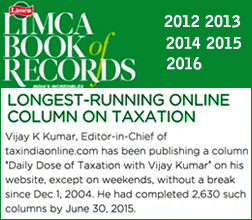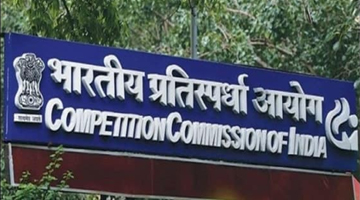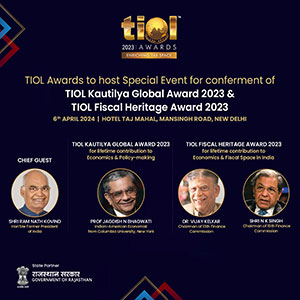GST - Air conditioners and hawai chappals cannot be taxed at same rate - Jaitley
 TIOL-DDT 2958
TIOL-DDT 2958
27 10 2016
Thursday
FINANCE Minister Arun Jaitley in a Facebook post says:
(1) The Multi Rate Structure
It has been proposed to the Council that there should be a four slab multi-rate tax structure. Items constituting nearly 50% of the weightage in the Consumer Price Index basket (mainly food items), are proposed to be exempted from the levy of the GST. There will be a zero tax on such items. The object of this is to ensure that the GST structure is not regressive or burdensome on the common man.
Of the balance items, a tax rate of 6%, 12%, 18% and 26% has been suggested. The principal rationale behind this tax structure is that items which are presently taxed at rates closer to the range of each of the slabs will be fitted into the particular rate of the slab. Those presently taxed below 3% as the total tax of the Centre and the States will be taxed at a zero rate. Those between 3-9% will be taxed at a 6% rate, those between 9-15% will be taxed at 12% and there would be a standard rate of 18%. Some have suggested that multiple tax rate is disadvantageous to the GST and would neutralise some of the advantages of a uniform tax structure. The reality is that a multiple tax rate in India is inevitable for several reasons.
Different items used by different segments of society have to be taxed differently. Otherwise the GST would be regressive. Air conditioners and hawai chappals cannot be taxed at the same rate. Total tax eventually collected has to be revenue neutral. The Government should not lose money necessary for expenditure nor make a windfall gain. The tax on some products in a narrow slab regime will substantially increase. This would be highly inflationary. A commodity being taxed by the Centre and the State at 11% at present will be taxed at 12%. If its taxation is suddenly raised on standard rate of 18%, it would disrupt the market and would be highly inflationary.
The gains of GST would necessarily involve that there would be a seamless transfer of goods and services across the country. The biggest advantage of GST actually lies in the GST design itself which provides for seamless transfer of input tax credit across the value chain. Most commodities would be taxed at lower than present levels. On some cases because of the tax rate going down and cascading of tax on tax going away, higher compliance levels which would reduce the level of non-compliance. The net gains of a more efficient tax would be felt over a longer period of time once the implementation glitches are all resolved. Hopefully with higher compliances and more revenue after the initial period, the GST Council would continue to have a look at the expenditure requirement and the tax likely to be collected and rationalise the tax rates and the structures in future.
(2) Compensation Payable Through Cess
The GST will result in the consuming States increasing their revenues from the very first year onwards. The GST Council has fixed a 14% revenue growth as a uniform, secular growth rate for all States. The revenue loss, if any, of a State has to be calculated on this basis. Some producing States may lose marginally in the initial years. The Constitutional amendment guarantees a five-year compensation to these States. The moot question is as to how is this to be funded by the Central Government? If the Central Government has to borrow money to fund the compensation, it would add to its liability and increasing the cost of borrowing by the Centre, the State Governments and the private sector. There is no rationale for increasing direct tax for this purpose. Theoretically it has been argued that the compensation be funded out of an additional tax in the GST rather than by cess. Assuming that the compensation is Rs.50,000 crores for the first year, the total tax impact of funding the compensation through a tax would be abnormally high. A rupees 1.72 lakh crore of tax would have to be imposed for the Central Government to get Rs.50,000 crores in order to fund the compensation. 50% of the tax collected would go to the States as their GST share and of the balance 50% in the hands of the Central Government and 42% more would go to the States as devolution. So out of every 100 rupees collected in GST only 29% remains with the centre. The tax impact of this levy would be exorbitantly high and almost unbearable. The alternative proposal is to have a cess account and continue same existing levies as cess for a period of five years before subsuming them as tax. This would include clean energy cess and cesses on luxury items and tobacco products, which in any case, presently also pay levy higher than 26%. This would ensure no additional burden on the tax payer and yet be able to compensate the losing States. It may further be noticed that benefitting States are not compensating the losing states. The Centre, as a non-beneficiary, has to compensate and the proposal for continuing existing cesses for five years to the extent of compensation required is the more benign way of compensating the losing States without burdening the tax payer.
Please also see our Cob Web
Clearance of imported metal scrap - CBEC Prescribes Procedure
CBEC has prescribed a new procedure for clearance of imported metal scrap (both ferrous and non-ferrous):
(i) Import of metal scrap in shredded form will be permitted through all ports/ICDs/CFSs/LCSs without any pre-shipment certificate as per the existing practice.
(ii) Import and clearance of un-shredded compressed or loose metallic scrap, shall be subject to the guidelines issued the Director General of Foreign Trade, Ministry of Commerce and Industry, Government of India under Public Notice No. 38/2015-2020 dated 06.10.2016 (followed by a Corrigendum by way of a Public Notice No. 40/2015-2020 dated 25.10.2016) and as per the following procedure:
(a) The consignments of unshredded, compressed or loose scrap shall be cleared only through those EDI ports where Risk Management Module is operational. These consignments will be subjected to documentary or physical check on the basis of selection done by Risk Management System.
(b) All the designated sea ports as specified in the DGFT Public Notice No. 38/2015-2020 dated 06.10.2016 are expected to install and operationalize Radiation Portal Monitors and Container Scanners by 31.03.2017 and till such time, the consignments of unshredded, compressed or loose scrap shall be subjected to scanning based on risk assessment at those ports where such facilities for scanning are currently existing.
(c) Depending upon the congestion at the Port/ICD, the availability of manpower and the antecedents of the importer, the concerned Principal Commissioner/Commissioner of Customs or Principal Commissioner/Commissioner of Central Excise, as the case may be, may permit the importer to remove the sealed container at his own risk and cost to his factory premises under re-warehousing procedure. This would be subject to conditions specified in (a) & (b) above.
Circular No. 48/2016., Dated: October 26, 2016
Benami Transaction (Prohibition) Amendment Act, 2016 Comes into Force from 1st November
THE Benami Transaction (Prohibition) Amendment Act, 2016 received the assent of the President on 10th August 2016 to come into force from a date to be notified by the Government. Now, the Government has notified 1st day of November, 2016 as the date on which provisions of the Act shall come into force.
Notification No. 98/2016, Dated: October 25, 2016
PMLA Tribunal to exercise powers under the Prohibition of Benami Property Transactions Act, 1988. The Government has notified that with effect from the 1st day of November, 2016, the Adjudicating Authority appointed under the Prevention of Money-Laundering Act, 2002 and the Appellate Tribunal established under section 25 of that Act shall discharge the functions of the Adjudicating Authority and Appellate Tribunal, respectively, under the Prohibition of Benami Property Transactions Act, 1988.
Notification No. 97/2016, Dated: October 25, 2016
Government notifies the Prohibition of Benami Property Transactions Rules, 2016:. The Government has notified with effect from the 1st day of November, 2016, the the Prohibition of Benami Property Transactions Rules, 2016.
Notification No. 99/2016, Dated: October 25, 2016
Issue of Intimation under section 143(1) of Income-tax Act, 1961 beyond prescribed time in non-scrutiny cases - CBDT Issues Order
IT has come to the notice of the Board that some returns of income having 'claim of refund' pertaining to Assessment Years 2014-2015, 2013-2014 and 2012-2013 were not processed within the time-frame prescribed under sub-section (1) of section 143 of the Income-tax Act. Consequently, intimation of 'amount of refund due' which is issued to the taxpayer after processing the income-tax return could not be sent. This has led to a situation where the concerned taxpayer is unable to get his legitimate refund in accordance with provisions of the Act, although the delay is not attributable to him.
In instances where a valid return of income having 'claim of refund' for Assessment Years 2014-2015, 2013-2014 and 2012-2013 was filed either under section 139 or 142(1) of the Act and in which the time for sending intimation under sub-section (1) of section 143 has lapsed, the Central Board of Direct Taxes ('CBDT'), by virtue of its powers under section 119 of the Act, has relaxed the time-frame prescribed in second proviso to sub-section (1) of section 143 and directs that such returns-of-income shall now be processed by 31.03.2017. Further, intimation of processing and consequential refund, if any, shall be issued expeditiously as per the prevailing norms and existing provisions of the Act.
CBDT Section 119 Order in F.No. 225/220/2016-ITA.II., Dated: October 25, 2016
Customs Duty Exemption to Ford Foundation - Rescinded
NOTIFICATION No. 66/1996-Customs, dated the 2nd September, 1996 exempts all the goods including automobiles, imported into India by the Ford Foundation for their official use from the whole of the duty of customs. This notification is now rescinded by Notification No. 130/2016-Cus(NT). But how did this become a Non-Tariff Notification? Board seems to have lost track of basic classification of notifications, whether Tariff or Non-Tariff.
Notification No. 130/2016-Cus(NT)., Dated: October 25, 2016
Kerala General Sales Tax Act - sale by brand name holder or trade mark holder to be first sale for purpose of Sec 5(2) - KAIL is the brand name owner of 'Sansui'
KAIL sold products like television, washing machine etc. manufactured under the brand name "Sansui". The entire products are purchased by KAIL from Videocon International Ltd. Videocon International Ltd., the holding company, brings the goods to Kerala on stock transfer and the entire goods were sold to its subsidiary, KAIL, for marketing in Kerala. Even though Videocon International Ltd. returned the entire sales as first sales on which they have collected tax from the subsidiary company, KAIL was assessed for sales tax by the Assessing Officer while scrutinizing the second sale exemption as claimed by KAIL and found that the goods in respect of which second sale exemption was claimed by the appellant-Company were goods sold under brand name "Sansui" and so much so, tax under Section 5(2) is payable by the appellant-Company.
The Supreme Court yesterday observed that when a product is marketed under a brand name, the Assessing Authority is entitled to assume that the sale is by the holder of the brand name or by a person, who is entitled to use the brand name in India. Apart from this, in this case, the marketing is actually done by fully owned subsidiary and/or a group company of the holding company, which was allowed to use the brand name "Sansui".
For more details, please see Breaking News
Until Tomorrow with more DDT
Have a nice day.
Mail your comments to vijaywrite@tiol.in
















